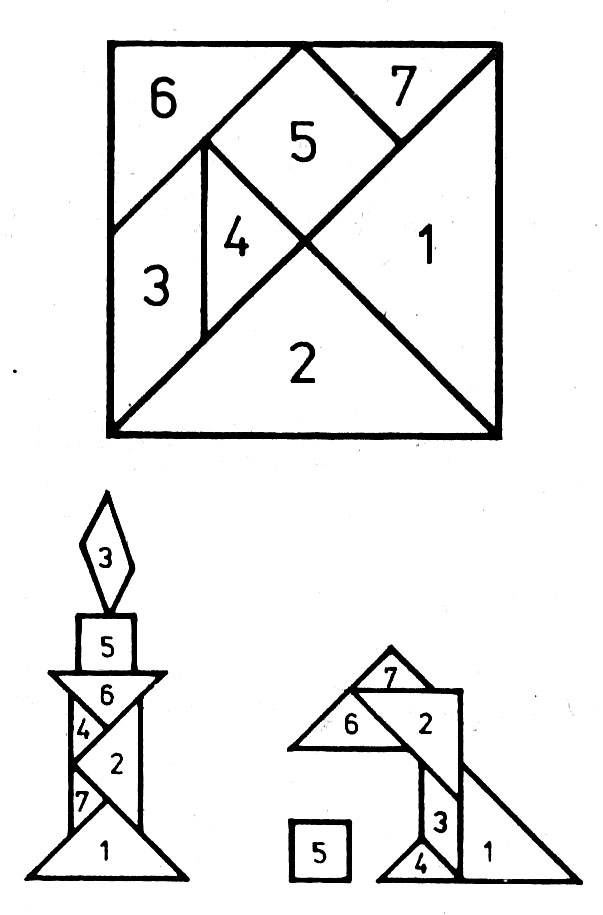Geometric puzzles.
Various types of geometric puzzles are great fun to prepare a child to learn to read and write. They develop spatial orientation, they help to distinguish directions, prompt a thorough visual analysis, stimulate the imagination. Game, which we propose, is about four thousand years old. It was founded in the Far East. The necessary tools for it are very easy to make. It's best to make them out of cardboard, cardboard (np. boxes of chocolates) or bakelite plate.

We divide a square of any size into parts like this, as shown in the drawing and cut carefully, all parts should fit together. Arrange the parts obtained from the square as follows, to create all sorts of figures (see drawing).

The principle is this, that all parts of the puzzle should be used when arranging each silhouette, and the individual elements cannot cover each other.
When we make two identical sets, then the child will be able to play with a friend, exchanging ideas with him. Fun is educational both then, when the child composes the composition according to his own idea, as well as when it reproduces it.
And here is another type of puzzle, which should interest a six-year-old. Cut out five equal-sized equilateral triangles from a fairly thick cardboard or cardboard. Four of them should be of the same color, and the fifth in a contrasting color. Each triangle is divided into five equal parts and cut (see drawing).

And here are the tasks, what we give the child to do: make triangles of the same color from the randomly scattered parts. If the child masters this skill, we give him a more difficult task: make five triangles like this, so that in each there is one part of a different color. Then we can complicate the task again. We prepare the next five triangles of the same size and in the same colors as the previous ones, we divide them in a similar way, but in parts of completely different dimensions. If the child is able to use the new puzzle easily, mix together the parts of all ten triangles. Now choosing the right part of the figure will be quite an art. as far as, as your child develops the skill of solving, we can gradually make his tasks harder and more complicated, adding more elements to the puzzle.